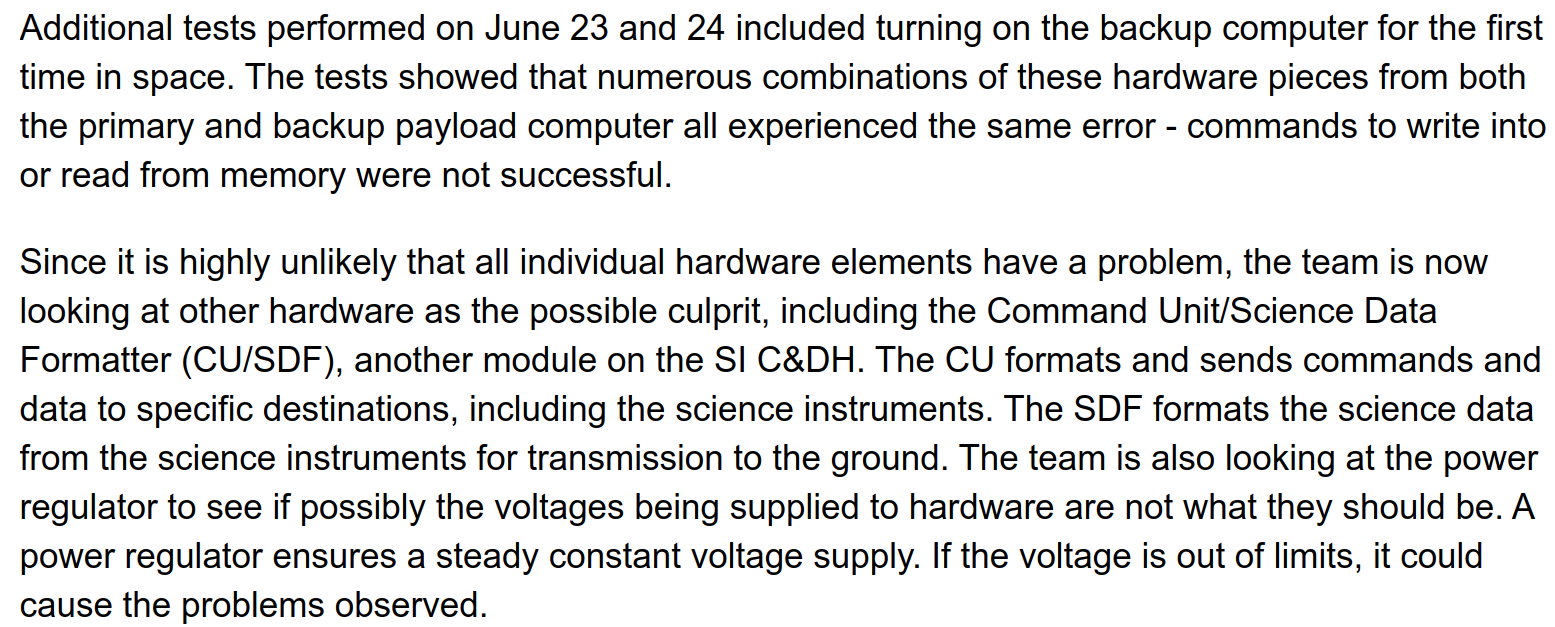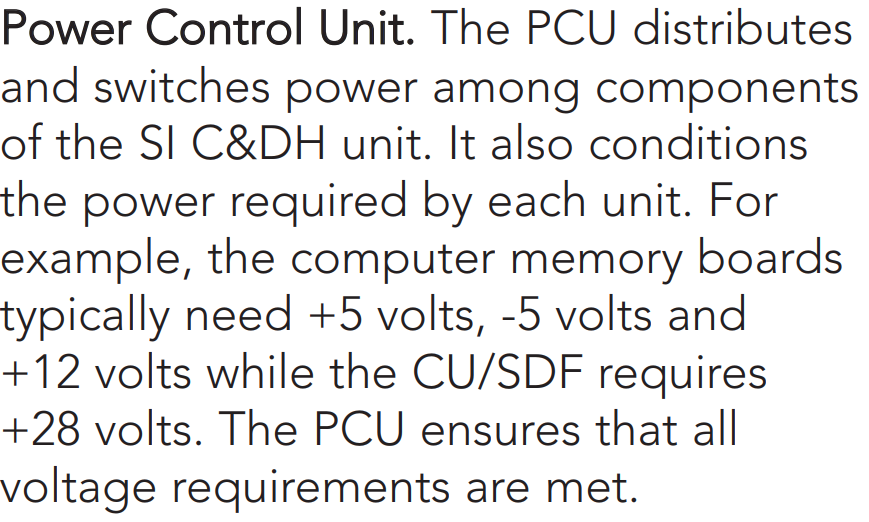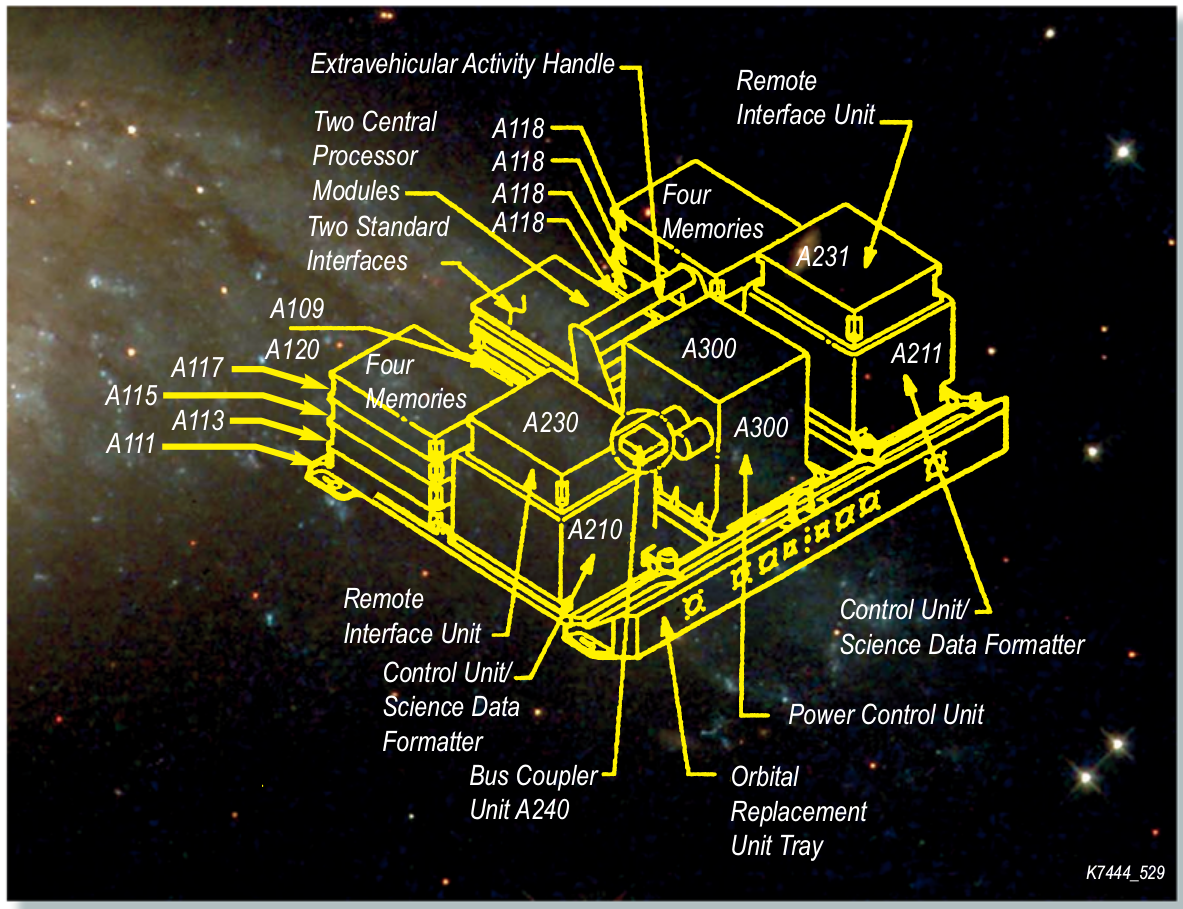-
Debug Update!
06/27/2021 at 03:18 • 0 commentsNASA has provided some updates to the debug process:
![]()
The next steps in the debug process appear to be looking at the Power Control Unit(PCU). The basic information we have about the PCU is:
![]()
These voltages are pretty common for computing designs even today, with the exception of the +28 volts. A common ATX power supply provides +5V, -5V, +12V and -12V ( in addition to +3.3V). The PCU is marked in this diagram as A300:
![]()
You will notice from the diagram everything seems to be duplicated for redundancy, and several media articles indicate that the PCU has a backup, however none is listed in the diagram or other NASA documentation that I have found.
-
Ann Merwarth
06/22/2021 at 01:10 • 0 commentsInterestingly, paper after paper after paper on these early computing systems for spacecraft, the name Ann Merwarth keeps popping up! I found this interesting video on youtube about her...
-
NSSC-1 Instruction Set Came From OAO
06/22/2021 at 00:49 • 8 comments![]()
As noted in several documents, the NSSC-1 appears to have evolved from the earlier OAO-C and OAO-3 computer systems. As such it appears the instruction set is almost identical based on notes provided from Ann C. Merwart. Although the document with the full instruction set for the NSSC-1 appears to not be available, we do have access to the OAO-3 Instruction Set. This datasheet describes a Noun/Verb configuration similar to that of the Apollo era computers.
-
In Search of a Document
06/22/2021 at 00:39 • 0 comments![]()
In several documents including the book Spacecraft Attitude Determination and Control, reference was made to a NASA document by A. Merwarth. I've been unable to locate this document online. If anyone knows the process to request documents from NASA, this one would be good to ask for:
Merwarth, A., Multimission Modular Spacecraft (MMS) Onboard Computer (OBC) Flight Executive Definition, NASA S-700–55, March 1976.
-
Scientific Instrument Command and Data Handling Unit Video
06/22/2021 at 00:28 • 0 commentssource: NASA
-
NASA's Hubble Space Telescope Out of Service
06/22/2021 at 00:12 • 0 comments![Hubble Space Telescope]()
June 18, 2021 - Operations Continue to Restore Payload Computer on NASA's Hubble Space Telescope
NASA continues to work on resolving an issue with the payload computer on the Hubble Space Telescope. The operations team will be running tests and collecting more information on the system to further isolate the problem. The science instruments will remain in a safe mode state until the issue is resolved. The telescope itself and science instruments remain in good health.
The computer halted on Sunday, June 13. An attempt to restart the computer failed on Monday, June 14. Initial indications pointed to a degrading computer memory module as the source of the computer halt. When the operations team attempted to switch to a back-up memory module, however, the command to initiate the backup module failed to complete. Another attempt was conducted on both modules Thursday evening to obtain more diagnostic information while again trying to bring those memory modules online. However, those attempts were not successful.
The payload computer is a NASA Standard Spacecraft Computer-1 (NSSC-1) system built in the 1980s that is located on the Science Instrument Command and Data Handling unit. The computer’s purpose is to control and coordinate the science instruments and monitor them for health and safety purposes. It is fully redundant in that a second computer, along with its associated hardware, exists on orbit that can be switched over to in the event of a problem. Both computers can access and use any of four independent memory modules, which each contain 64K of Complementary Metal-Oxide Semiconductor (CMOS) memory. The payload computer uses only one memory module operationally at a time, with the other three serving as backups.
Launched in 1990, Hubble has contributed greatly to our understanding of the universe over the past 30 years.
For more information about Hubble, visit: www.nasa.gov/hubble
NASA Standard Spacecraft Computer-1 (NSSC-1)
Documentation for the NSSC-1 Used on the Hubble Telescope
 Dave's Dev Lab
Dave's Dev Lab




